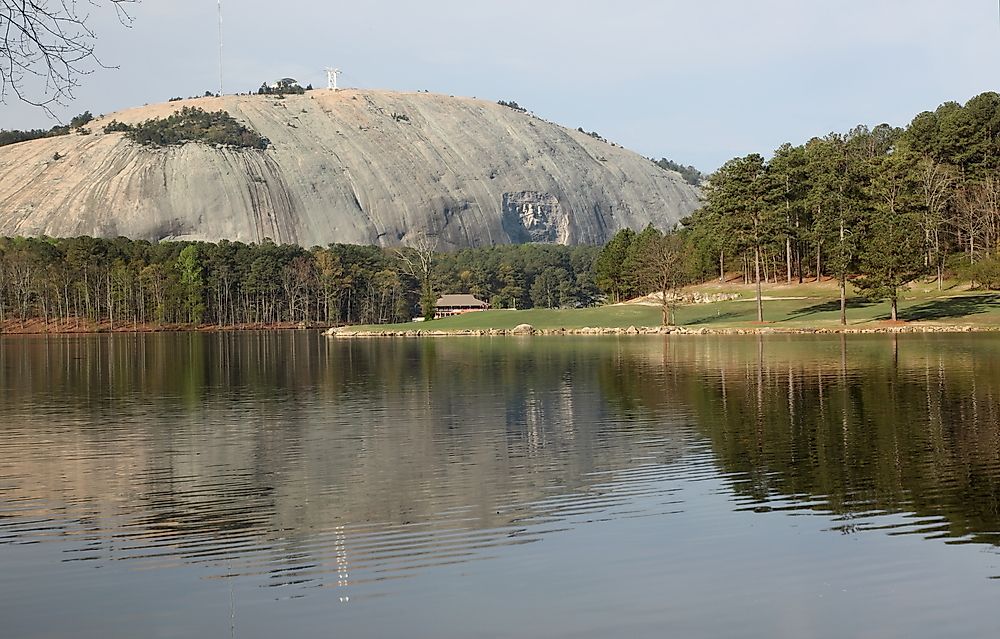What Is An Intrusive Rock?

An intrusive rock is formed when magma crystallizes and solidifies underground to form rocks. The speed at which the magma cools and solidifies would determine the texture and appearance of the rocks. Examples of intrusive rock formations are batholiths, dikes, and sills.
Formation of Intrusive Rocks
When magma from deep underneath creeps up towards the surface it ends up intruding into the rocks above it through filling and widening existing cracks, melting the surrounding rocks, pushing the rocks aside, or by just breaking the rock by brute force and pressure. After it has intruded into the new space, it starts to cool and solidify to form intrusive rocks. This process is slow since the elements that speed up cooling like the wind are not present, the effect of this slow cooling leads to the formation of larger crystals in comparisons to those formed on the surface. The large crystals make the rocks texture visible to the naked eye.
There are two types of intrusive rock formations, Tabular plutons and Massive plutons. Tabular plutons are shaped in sheets and are formed when magma comes into contact with sedimentary bedrocks, and the shapes of the resulting rocks are determined by the manner in which the magma intrudes the rocks, sometimes horizontal sheets are formed, and other times vertical ones rise up. A Laccolith is an example of the tabular pluton. Massive plutons, on the other hand, are formed when huge quantities of magma solidify in one place to form mega structures like the Batholith with some big enough to pass as mountains.
Types of Plutons
There is the Chonolith which is an irregularly shaped intrusion with a demonstrable base. A Cupola is a dome-shaped projection that forms the top of a large scale subterranean intrusion. A Dike is a narrow tabular formation that usually is vertically inclined. There is the Laccolith which is a concordant formation with a flat base and a convex top. The Lopolith, which is the opposite of the Laccolith, has a flat top and a shallow convex base. There is the Phacolith which is lens-shaped and occupies the crest of an anticline or syncline’s trough. A Batholith is a giant pluton that is over 100 square kilometres in area.
Characteristics of Intrusive Rocks
Intrusive rocks have large crystals which are the effect of the slow cooling. There are intrusive rocks that have pegmatitic texture as a result of the cooling process which is combined with water. There are those described as vesicular as a result of being formed from volcanic ash. The bubbles visible inside them are caused by low gas content that gets trapped during the formation. The materials that form the rocks determine the color of each intrusive rock and the colors usually range from light to medium dark depending on the concentration of magnesium and iron. Some intrusive rocks like the Obsidian are glassy and extremely hard and have been used as cutting tools in the past and ornamental add-ons in modern houses.











